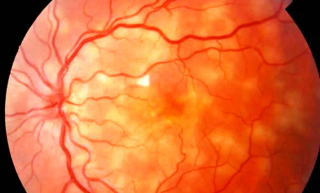Uveitis is an Inflammation of the Inside of the Eye
Uveitis is inflammation of the uvea — the middle layer of the eye that consists of the iris, ciliary body and choroid.
Uveitis can have many causes, including eye injury and inflammatory diseases. Toxic exposure, such as to pesticides and acids used in manufacturing processes, also can cause uveitis.
The type of uveitis you have is classified by where inflammation occurs in the uvea:
- Anterior uveitis refers to inflammation of the iris alone or the iris and ciliary body.
- Intermediate uveitis refers to inflammation of the ciliary body.
- Posterior uveitis is inflammation of the choroid.
- Diffuse uveitis is inflammation in all areas of the uvea. (Also called panuveitis.)
Many cases of uveitis are chronic, and they can produce numerous possible complications, including clouding of the lens (cataract) or cornea, elevated eye pressure (IOP), glaucoma, and retinal problems (such as swelling of the retina or retinal detachment). These complications can result in vision loss.
Uveitis occurs most frequently in people ages 20 to 50.More than 500,000 people in North America are affected by uveitis each year. Uveitis is responsible for 50,000 new cases of blindness a year and up to 10 percent of all cases of blindness.
Anterior uveitis is the most common form, with an annual incidence of about 8 to 15 cases per 100,000 people. This type of uveitis affects men and women equally.
Symptoms of Uveitis
About half of all uveitis cases — with most occurring in the anterior uvea — don't have an obvious cause. Symptoms of anterior uveitis include light sensitivity, decreased visual acuity and eye pain.
Intermediate and posterior uveitis usually are painless. Symptoms of these types of uveitis include blurred vision and floaters, typically in both eyes. Most people who develop intermediate uveitis are in their teens, 20s or 30s.
Diffuse uveitis has a combination of symptoms of all types of uveitis.
What Causes Uveitis?
Uveitis has dozens of causes, including viral, fungal and bacterial infections. But, in many cases, the cause is unknown (idiopathic).
Ophthalmologists sometimes can identify the cause if there has been trauma to the eye, such as from surgery or a blow, or if you have an infectious or immunological systemic disorder.
Some of the many different systemic disorders that can cause uveitis include:
- Acute posterior Multifocal Placoid Pigment Epitheliopathy (AMPPE)
- ankylosing spondylitis
- Behçet's disease
 AMPPE
AMPPE - birdshot retinochoroidopathy
- brucellosis
- herpes simplex
- herpes zoster
- inflammatory bowel disease
- juvenile rheumatoid arthritis
- Kawasaki's disease
- leptospirosis
- Lyme disease
 Toxoplasmosis
Toxoplasmosis - multiple sclerosis
- presumed ocular histoplasmosis syndrome
- psoriatic arthritis
- Reiter's syndrome
- sarcoidosis
- syphilis
- systemic lupus erythematosus
- toxocariasis
- toxoplasmosis
- tuberculosis
- Vogt-Koyanagi-Harada syndrome
Smoking also appears linked to development of uveitis. Furthermore, our study done at McGill showed that smokers have more severe and more difficult to treat uveitis.
"Cigarette smoke includes compounds that stimulate inflammation within the blood vessels, and this may contribute to immune system disruption and uveitis,"
Your doctor likely will prescribe a steroid to reduce the inflammation in your eye. Whether the steroid is administered as an eye drop, pill or injection depends on the type of uveitis you have. Because anterior uveitis affects the front of the eye, it's easy to treat with eye drops.
Posterior uveitis usually requires tablets or injections. Depending on your symptoms, any of these treatments might be used for intermediate uveitis.
Corticosteroids can produce many serious side effects, such as kidney damage, high blood sugar, high blood pressure, osteoporosis and glaucoma.
This is especially true of corticosteroids in pill form because the dose must be relatively high in order for enough of the drug to find its way to the back of the eye. So it is important to follow your doctor's dosage instructions carefully and to keep visiting him or her regularly to monitor the progress of the treatment. To treat inflammation and reduce the side effects from the corticosteroids often Immunosuppresive drugs like: Imuran, Cell-Cept and other are prescribed. Biologics like anti-TNF play a important role in the treatment of severe uveitis.
If you have anterior uveitis, your doctor likely will prescribe, in addition to steroids, pupil-dilating eye drops to reduce pain. You also may need eye drops to lower your intraocular pressure if you develop high eye pressure due to uveitis.
If you have a known systemic condition that may be contributing your uveitis, your doctor will treat that as well.